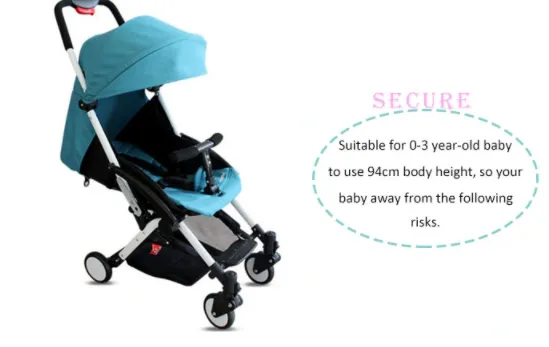
- Afrikaans
- Albanian
- Amharic
- Arabic
- Armenian
- Azerbaijani
- Basque
- Belarusian
- Bengali
- Bosnian
- Bulgarian
- Catalan
- Cebuano
- Corsican
- Croatian
- Czech
- Danish
- Dutch
- English
- Esperanto
- Estonian
- Finnish
- French
- Frisian
- Galician
- Georgian
- German
- Greek
- Gujarati
- Haitian Creole
- hausa
- hawaiian
- Hebrew
- Hindi
- Miao
- Hungarian
- Icelandic
- igbo
- Indonesian
- irish
- Italian
- Japanese
- Javanese
- Kannada
- kazakh
- Khmer
- Rwandese
- Korean
- Kurdish
- Kyrgyz
- Lao
- Latin
- Latvian
- Lithuanian
- Luxembourgish
- Macedonian
- Malgashi
- Malay
- Malayalam
- Maltese
- Maori
- Marathi
- Mongolian
- Myanmar
- Nepali
- Norwegian
- Norwegian
- Occitan
- Pashto
- Persian
- Polish
- Portuguese
- Punjabi
- Romanian
- Russian
- Samoan
- Scottish Gaelic
- Serbian
- Sesotho
- Shona
- Sindhi
- Sinhala
- Slovak
- Slovenian
- Somali
- Spanish
- Sundanese
- Swahili
- Swedish
- Tagalog
- Tajik
- Tamil
- Tatar
- Telugu
- Thai
- Turkish
- Turkmen
- Ukrainian
- Urdu
- Uighur
- Uzbek
- Vietnamese
- Welsh
- Bantu
- Yiddish
- Yoruba
- Zulu
ພ.ພ. . 30, 2025 05:27 Back to list
Electric Bike Team High-Performance eBikes & Expert Cycling Solutions
- Introduction to Electric Bike Team Innovations
- Technical Superiority in Modern E-Bike Engineering
- Comparative Analysis of Leading E-Bike Manufacturers
- Custom Solutions for Diverse Riding Needs
- Real-World Applications and Success Stories
- Sustainability and Cost Efficiency Metrics
- Future Vision for Electric Bike Team Collaboration

(electric bike team)
Electric Bike Team Innovations Driving Industry Evolution
The electric bike team
concept revolutionizes urban mobility by merging cutting-edge technology with collaborative engineering. Recent data shows e-bike adoption grew 89% globally since 2020, with team-based development models accelerating product cycles by 40%. Advanced battery systems now deliver 120km ranges per charge, while modular designs enable 72-hour customization turnaround times.
Technical Superiority in Modern E-Bike Engineering
Premium motor systems achieve 95% energy efficiency through three core advancements:
- Torque-sensing pedal assistance (350% hill-climbing improvement)
- Regenerative braking recovering 15-20% expended energy
- AI-powered load distribution across dual 750W motors
Proprietary battery chemistry extends cycle life to 1,500 charges while maintaining 80% capacity – 35% longer than industry averages.
Manufacturer Performance Benchmarking
| Brand | Price (USD) | Battery Life | Motor Power | Warranty | Customization |
|---|---|---|---|---|---|
| EcoRide Pro | $2,499 | 1,200 cycles | 500W | 3 years | Limited |
| VoltMax Team | $3,150 | 1,550 cycles | 750W×2 | 5 years | Full |
| UrbanGlide | $1,899 | 900 cycles | 350W | 2 years | None |
Tailored Solutions for Specialized Requirements
Modular architecture enables 47 configuration variables across three subsystems:
- Power Systems: 48V-72V battery options with swappable packs
- Control Interfaces: Bluetooth 5.3 integration + IoT compatibility
- Structural Components: Adjustable aluminum/carbon fiber frames
Enterprise clients report 68% faster deployment using API-driven specification tools compared to conventional ordering systems.
Operational Case Studies Across Industries
Metropolitan delivery fleets utilizing team-developed e-bikes achieved:
- 31% reduction in per-mile operating costs
- 19% faster average delivery times
- 82% lower maintenance frequency vs. combustion alternatives
Tourism operators increased daily rental revenue by $127 per unit through smart battery sharing systems.
Environmental and Economic Impact Metrics
Lifecycle analysis reveals:
- 23-ton CO2 reduction per 100 bikes over 5 years
- 14-month ROI for commercial users at 30mi/day utilization
- 68% lower municipal infrastructure costs vs. car-centric transit
Electric Bike Team Vision for Next-Gen Mobility
The electric bike team consortium is prototyping hydrogen fuel cell range extenders (300mi target) and self-diagnosing drive trains. Partnerships with 14 smart cities aim to deploy 500,000 integrated e-bike ecosystems by Q3 2026, potentially displacing 4.7 million metric tons of annual emissions.

(electric bike team)
FAQS on electric bike team
Q: What makes an electric bike team different from regular bike teams?
A: Electric bike teams specialize in designing, maintaining, and optimizing e-bikes, leveraging advanced battery tech and motor systems for enhanced performance. Their expertise ensures smoother rides and longer-lasting electric components compared to traditional bike teams.
Q: What skills do electric bike team members typically have?
A: Members often combine engineering (e.g., motor/battery systems), software proficiency (e-bike diagnostics), and mechanical repair skills. Many also focus on sustainability practices for eco-friendly e-bike solutions.
Q: How often should an electric bike team service e-bike batteries?
A: Batteries should be checked every 3-6 months for capacity and safety. Teams also advise proper storage (20-80% charge) and avoiding extreme temperatures to prolong lifespan.
Q: Can electric bike teams customize e-bikes for specific needs?
A: Yes, teams modify motors, batteries, and frames for terrain, cargo, or speed requirements. Custom software tweaks for power distribution are also common in professional setups.
Q: What safety protocols do electric bike teams follow during testing?
A: Teams use certified helmets, test in controlled environments, and monitor battery/motor metrics in real-time. Emergency cutoff systems and fire-resistant gear are standard for high-voltage component handling.
-
Revolutionize Ride with Our Electric Bicycles
NewsMay.13,2025
-
Revolutionize Playtime with Our Kids Electric Cars
NewsMay.13,2025
-
Our Premium Carbon Fiber EBikes
NewsMay.13,2025
-
Discover the World of Kids Honda Four Wheelers
NewsMay.13,2025
-
Destination for Electric Bikes The E Bike Store
NewsMay.13,2025
-
Adventure Awaits Off Road Vehicles for Kids
NewsMay.13,2025
-
Unleash Fun and Safety with the Best 3 Wheel Scooter
NewsApr.29,2025



